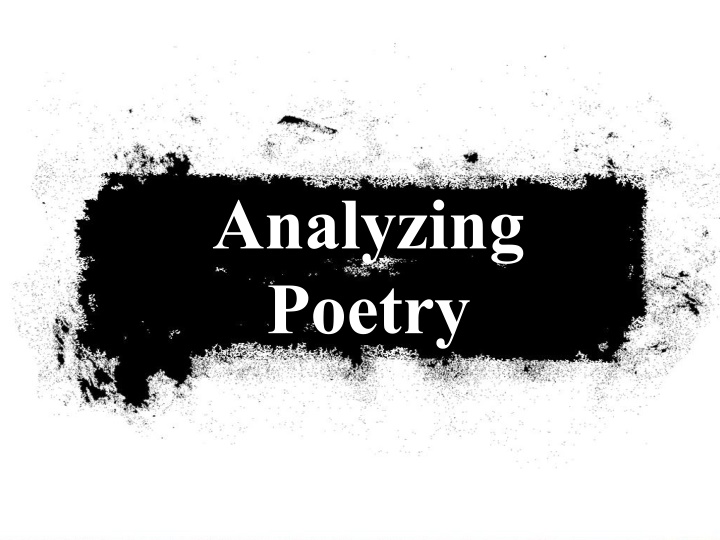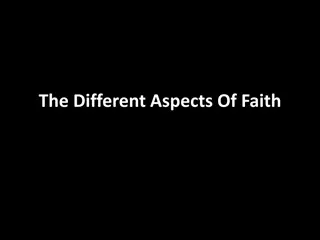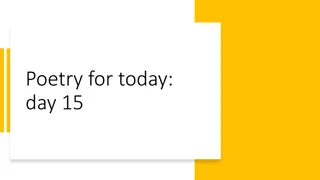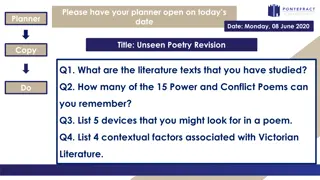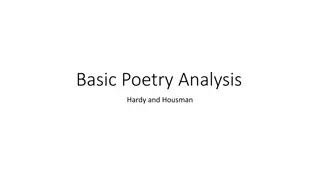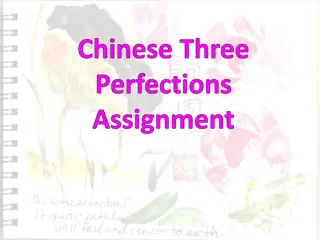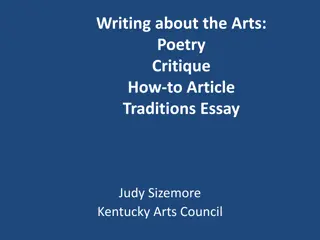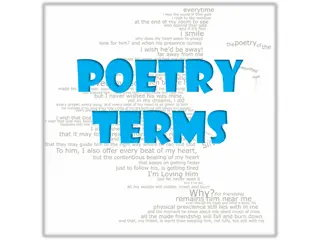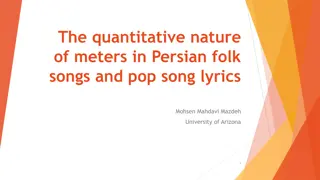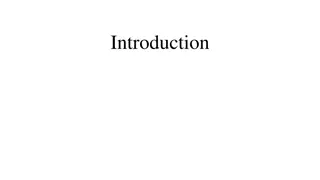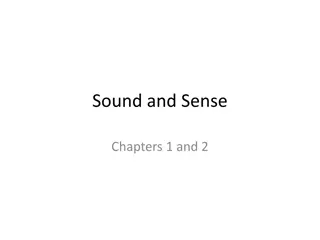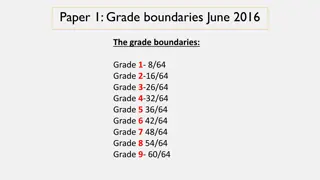Analyzing Poetry: Understanding the Depths of Verses
Dive into the intricate world of poetry analysis through SOAPS, TP-CASTT, and DIDLS methods. Explore the elements of subject, occasion, audience, purpose, speaker, and more to unravel the layers of meaning in poems. Learn how to decode titles, paraphrase verses, uncover connotations, analyze attitudes and shifts, and discover underlying themes. Enhance your poetry comprehension and interpretation skills with this comprehensive guide.
Download Presentation

Please find below an Image/Link to download the presentation.
The content on the website is provided AS IS for your information and personal use only. It may not be sold, licensed, or shared on other websites without obtaining consent from the author.If you encounter any issues during the download, it is possible that the publisher has removed the file from their server.
You are allowed to download the files provided on this website for personal or commercial use, subject to the condition that they are used lawfully. All files are the property of their respective owners.
The content on the website is provided AS IS for your information and personal use only. It may not be sold, licensed, or shared on other websites without obtaining consent from the author.
E N D
Presentation Transcript
Analyzing Poetry
3 Ways SOAPS TP-CASTT DIDLS
SOAPS S= subject What is the subject of the poem? O= Occasion What is the occasion in the poem? A= Audience Who is to hear/read the poem? P= Purpose What is the purpose of the poem? S= Speaker Who is saying the words of the poem?
TP-CASTT TITLE Examine the title before reading the poem. Consider denotations (literal meaning).
TP-CASTT PARAPHRASE Translate the poem into your own words (literal/denotation). Resist the urge to jump to interpretation. A failure to understand what happens literally inevitably leads to an interpretive misunderstanding. HINT- Look for syntactical units (complete sentences rather than line by line)
TP-CASTT CONNOTATION Examine the poem for meaning beyond the literal. HINT look for the following: -Diction -Imagery (especially metaphor, simile, personification) -Symbolism -Irony (paradox, understatement, oxymoron) -Allusion -Effect of sound devices (alliteration, onomatopoeia, assonance, consonance, rhyme)
TP-CASTT ATTITUDE Tone- examine both the speaker s and the poet s attitudes. Remember, don t confuse the author with the persona. HINT- Look for the following: -Speaker s attitude toward self, other characters, and the subject. -Attitudes of characters other than the speaker. -Poet s attitude toward the speaker, other characters, and finally toward the reader.
TP-CASTT SHIFTS Note shift in speaker and attitude. HINT- Look for the following: -Occasion of poem (time and place) -Key words (but, yet) -Punctuation (dashes, period, colons, etc.) -Stanza divisions -Changes in line and or stanza length -Irony (sometimes irony hides shifts) -Effect of structure on the meaning
TP-CASTT TITLE Examine the title again, this time on an interpretive level. - connotations
TP-CASTT THEME First list what the poem is about (subject) Then determine what the poem is saying about each of those subjects (themes). Remember, theme must be expressed as a complete sentence.
Now you try itTP-CASTT Dreams Hold fast to dreams For if dreams die Life is a broken-winged bird That cannot fly. Hold fast to dreams For when dreams go Life is a barren field Frozen with snow. -Langston Hughes
DIDLS analyzing tone DICTION The connotation or associations of word choice. Different words for the same thing often suggest different attitudes toward that thing. Example: What is the difference between happy and content? How about happy and ecstatic?
DIDLS analyzing tone IMAGES Vivid appeals to understanding through the five senses. The images a speaker/writer chooses to present suggest her attitude toward her subject. Example: If a narrator visiting a farm describes the awful smells rather than the beautiful countryside that would tell us about his attitude.
DIDLS analyzing tone DETAILS Facts that are included or those that are omitted. If a narrator witnesses a horrible sight and withholds the gory details, his attitude would be different than a narrator who focuses mostly on the gory details. Example: Hard Copy vs. CNN
DIDLS analyzing tone LANGUAGE The overall use of language such as formal, colloquial, clinical, or jargon. An ambassador talks differently than Huck Finn who talks differently than a doctor who talks differently than a cop. The type of overall language used tells us something about their attitude.
DIDLS analyzing tone SENTENCE STRUCTURE How the sentence structure affects the reader s attitude. Long, flowing sentences give a different feeling than short choppy ones. If the narrator has awkward sentence structure, we MIGHT think he is uneducated. Long flowing sentences MIGHT suggest sophistication.
